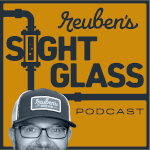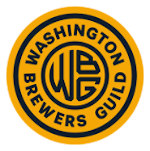Non-Alcoholic Beer Provides a Bright Side in the Darkest of Months
It’s a dreaded phrase in the world of beer, at least in terms of sales and marketing: Dry January. These days, things are tough enough in the beer biz, and the increasingly popular trend of going dry for January does not help. But this year there is some good news for the beer industry as we near the end of the month.
How real is Dry January? According to Statista, about 65 percent of people between the ages of 21 and 54 said they were “somewhat to very likely” to observe Dry January this year, as the graph below illustrates. These numbers make beer wholesalers and retailers cringe, so where is the bright side?

A recent study by Morning Consult showed that over half of Americans participating in Dry January are reaching for low- and no-alcohol beer to help them achieve their goals. The poll was commissioned by the Beer Institute. It showed that 58 percent of abstainers this month opted for beer. Non-alcoholic beer, but beer nonetheless.
“As many Americans increase their focus on moderate consumption, a growing majority of them are using low- and no-alcohol beer to help them hit their goals,” said Brian Crawford, president and CEO of the Beer Institute. “Brewers are committed to meeting this demand, and as the beverage of moderation, beer’s dominance in the low- and no-alcohol space reflects decades of investment by brewers and an industry commitment to encourage responsible consumption.”
According to Crawford, “The beer industry is enabling consumers to enjoy their favorite beers without sacrificing quality.” Led by companies like Athletic Brewing and Best Day Brewing, both of which focus entirely on N-A beers, consumers can now choose sobriety and craft beer at the same time. Those companies are not alone. Many breweries across the nation have invested in N-A technology and processes.
While some craft beer purists remain uninterested in non-alcoholic beers, there’s no denying that many consumers, especially younger consumers, are not so resistant. There is value in keeping Dry January participants on the craft beer train, whether the beer contains alcohol or not. When they are ready to reach for a normal, alcoholic craft beer, they won’t need to reach very far.
Key highlights from the poll
Of those participating in Dry January,
- 58 percent feel that new options like low- and no-alcohol beer help them moderate their consumption.
- 58 percent say that low- and no-alcohol beer is a good alternative for people who are looking to moderate their alcohol consumption long-term.
- 55 percent say that the quality of non-alcoholic beer has improved over the past few years.
Other data of note:
- According to NIQ, beer makes up 86.1 percent of all non-alcoholic beverage dollar share in the United States.
- The non-alcoholic drink market now exceeds half a billion dollars a year, up 31 percent in the past year.
- Almost all major beer brands are now producing NA beers, including Anheuser-Busch, Molson Coors, Constellation, HEINEKEN and Sam Adams.
- Athletic Brewing, which exclusively brews NA beer, has become the 14th largest craft brewer in the U.S.
Methodology:
Morning Consult conducted this poll on behalf of the Beer Institute between January 9-10, 2024, among a sample of 2,137 adults aged 21 or older. The interviews were conducted online, and the data were weighted to approximate a target sample of Adults 21+ based on age, gender, race, educational attainment, and region. The results have a margin of error of plus or minus two percentage points.
About The Beer Institute
The Beer Institute is a national trade association for the American brewing industry, representing brewers, beer importers and industry suppliers—an industry that supports nearly 2.4 million jobs and provides more than $409 billion to the American economy. First founded in 1862 as the U.S. Brewers Association, the Beer Institute is committed today to developing sound public policy and to the values of civic duty and personal responsibility.

































